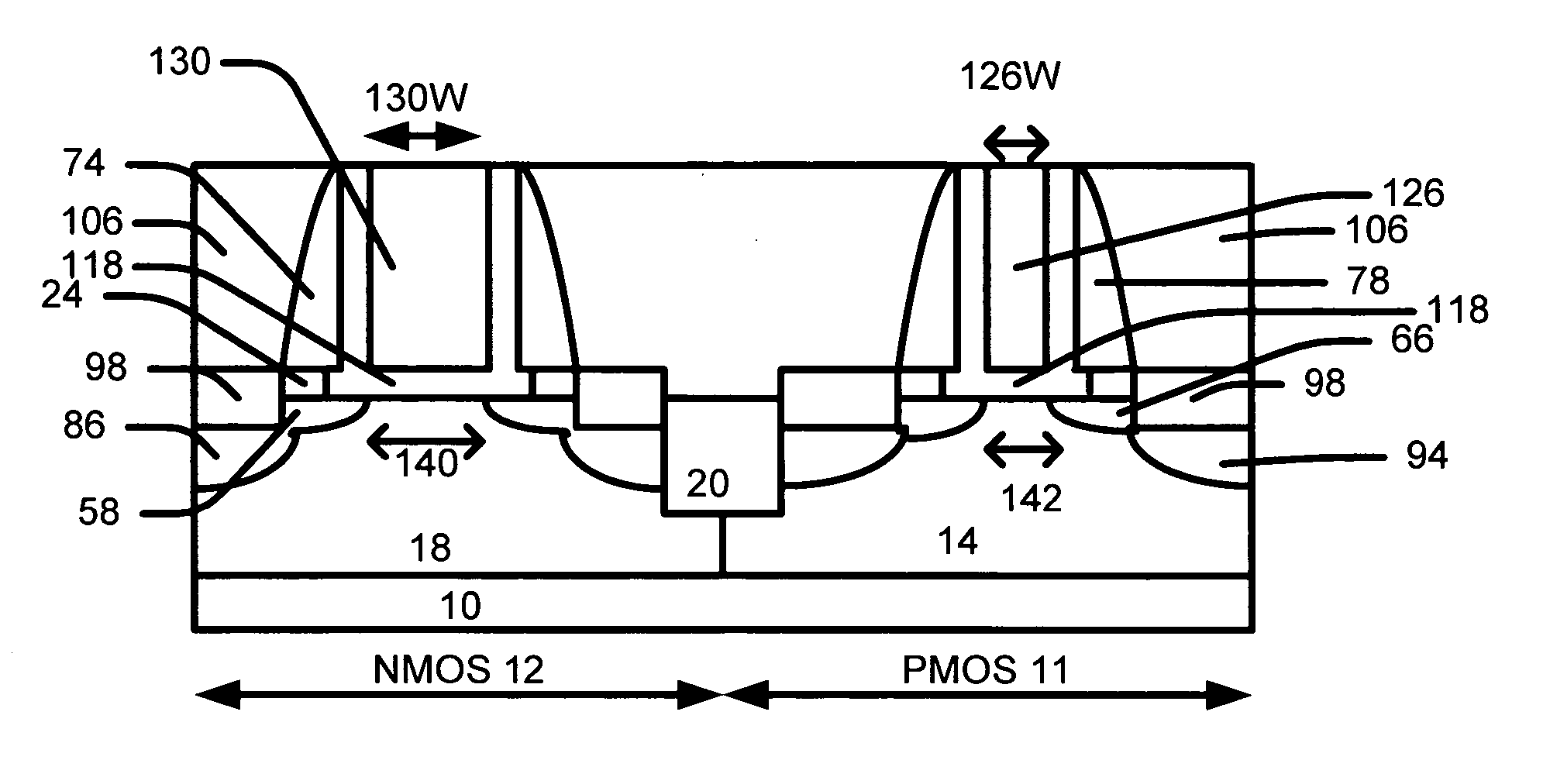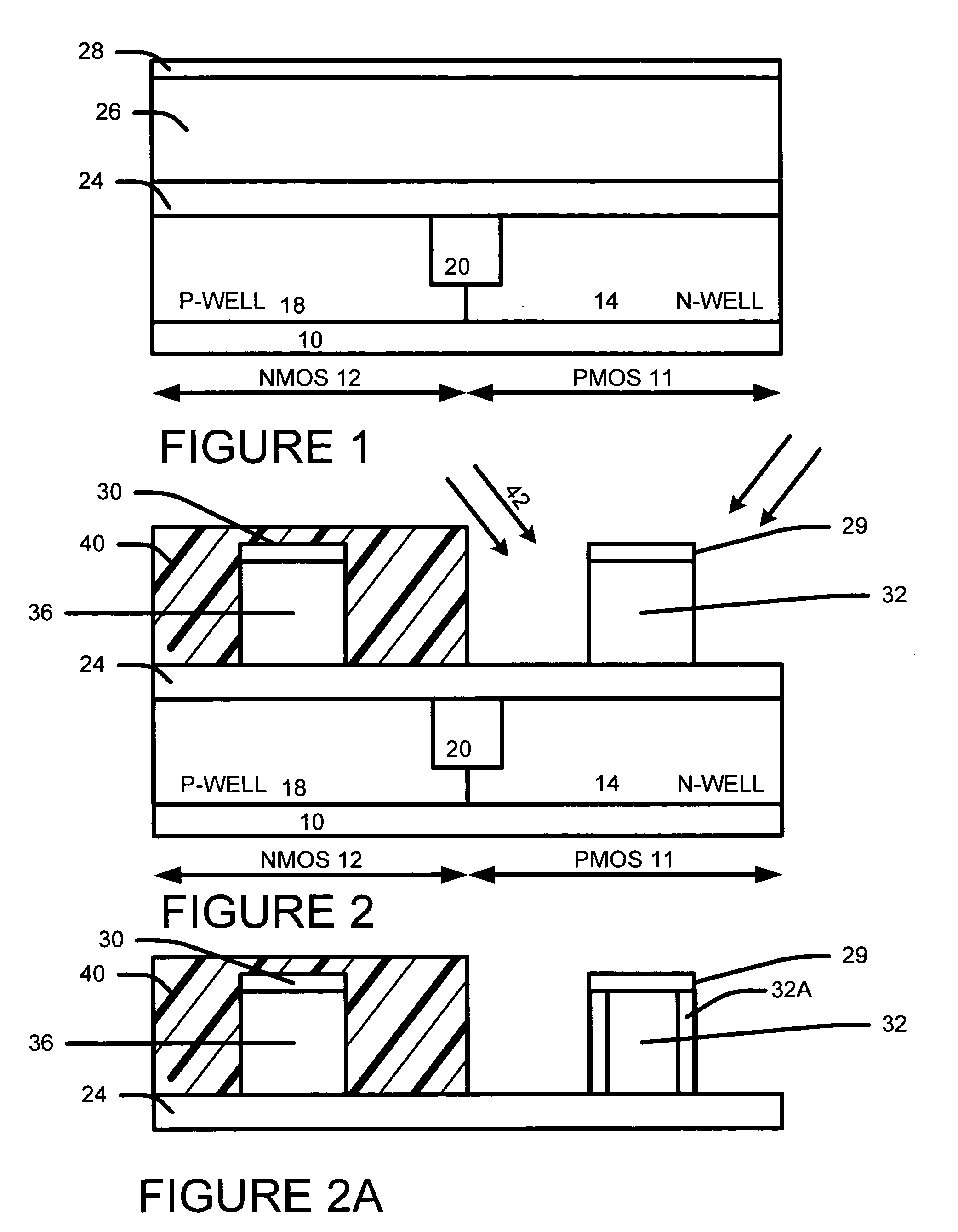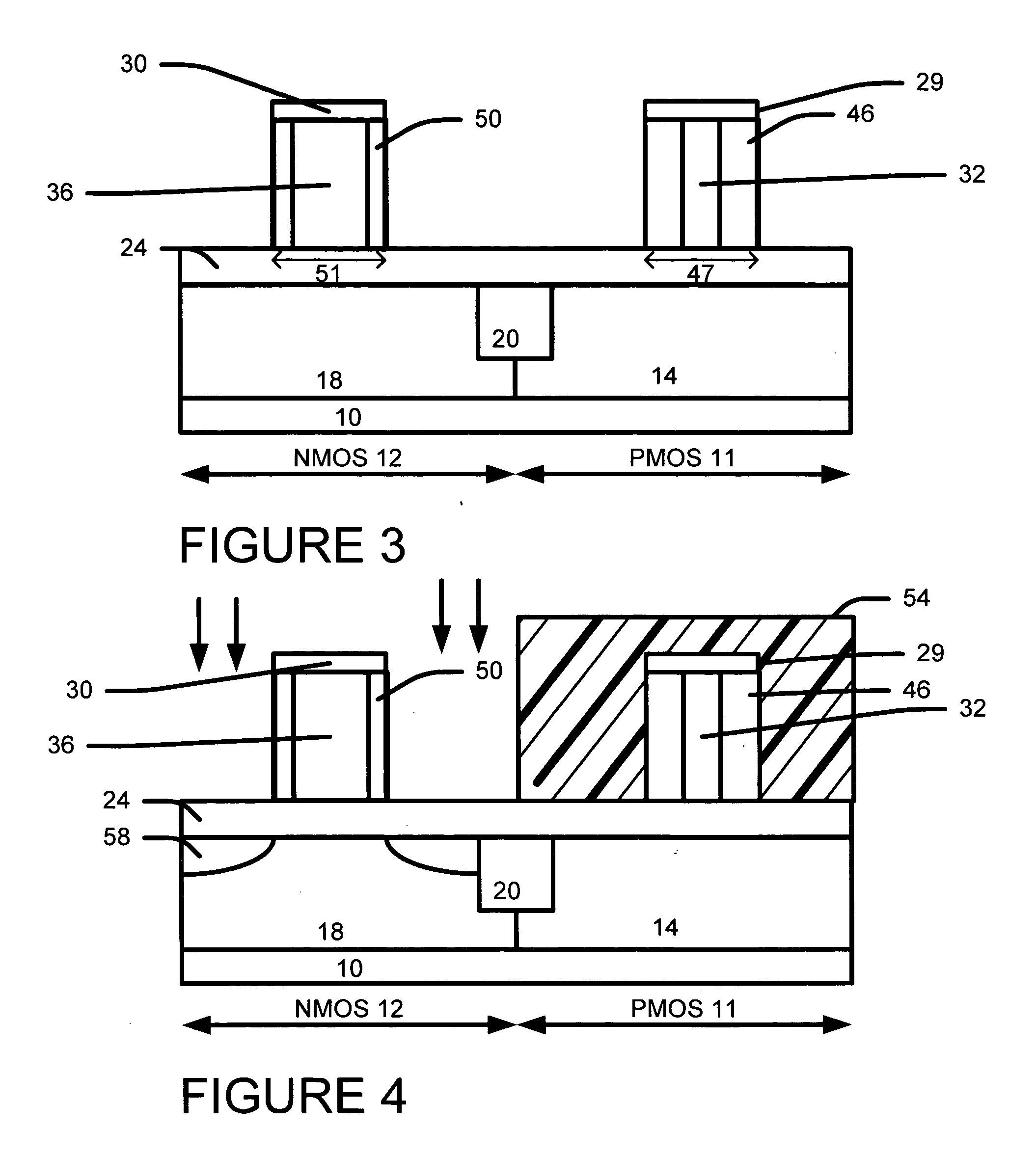Selective oxide trimming to improve metal T-gate transistor
a technology of metal t-gate transistor and selective oxide, which is applied in the manufacturing of semiconductor/solid-state devices, basic electric elements, electrical equipment, etc., can solve the problems of low power the need for high k material is therefore low power driven and not high performance driven, and the current siosub>2 material could reach an unacceptable gate leakage with decreasing oxide thickness, etc., to achieve the effect of reducing repetition
- Summary
- Abstract
- Description
- Claims
- Application Information
AI Technical Summary
Benefits of technology
Problems solved by technology
Method used
Image
Examples
first example embodiment
II. First Example Embodiment
[0034] Referring to FIG. 1, we form a n-well 14 in PMOS area 11 and a p-well 18 in a NMOS area 12 in a substrate 10. The substrate can be silicon wafer and other substrate using in semiconductor manufacturing.
[0035] Next, we form isolation regions 20 in the substrate 10. The isolation regions are preferably shallow trench isolation (STI) regions.
[0036] We then form a bottom pad dielectric layer 24, a silicon containing layer (e.g., polysilicon layer) 26 and a hard mask layer 28 over the substrate. The polysilicon layer preferably contains polysilicon. The polysilicon layer can be comprised of polysilicon, amorphous silicon or SiGe.
[0037] The bottom pad dielectric layer 24 is preferably comprised of oxide and has a thickness between 50 and 400 Å.
[0038] The silicon containing layer ( e.g., polysilicon layer) 26 preferably has a thickness between 1000 and 2000 Å.
[0039] The hard mask layer 28 is preferably comprised of nitride. The hard mask layer is use...
second example embodiment
III. Dual Work Function Metal Gate
[0105] FIGS. 1 to 14 and FIGS. 18 to 23 show an embodiment with an optional dual work function metal gate process flow. The embodiment forms two types of gate comprised of different materials. For example, FIG. 23 shows a NMOS gate 240 that can be made of a different metal than PMOS gate 212.
[0106] The process flow is basically the same as the first embodiment as shown in FIGS. 1 to 14.
[0107] Referring to FIG. 18, we form a PMOS poly etch mask 200 having an PMOS poly opening over the PMOS area 11. The etch mask 200 is preferably comprised of photoresist.
[0108] As shown in FIG. 18, we remove the PMOS sacrificial gate 32 and portions of the bottom pad dielectric layer 24 to form a PMOS gate openings 202 that exposes portions of the bottom pad dielectric layer 24.
[0109] Then we remove the exposed portions of the bottom pad dielectric layer 24 in the PMOS gate openings 202. As noted above in the description of the first example embodiment, the under...
PUM
 Login to View More
Login to View More Abstract
Description
Claims
Application Information
 Login to View More
Login to View More - R&D
- Intellectual Property
- Life Sciences
- Materials
- Tech Scout
- Unparalleled Data Quality
- Higher Quality Content
- 60% Fewer Hallucinations
Browse by: Latest US Patents, China's latest patents, Technical Efficacy Thesaurus, Application Domain, Technology Topic, Popular Technical Reports.
© 2025 PatSnap. All rights reserved.Legal|Privacy policy|Modern Slavery Act Transparency Statement|Sitemap|About US| Contact US: help@patsnap.com



